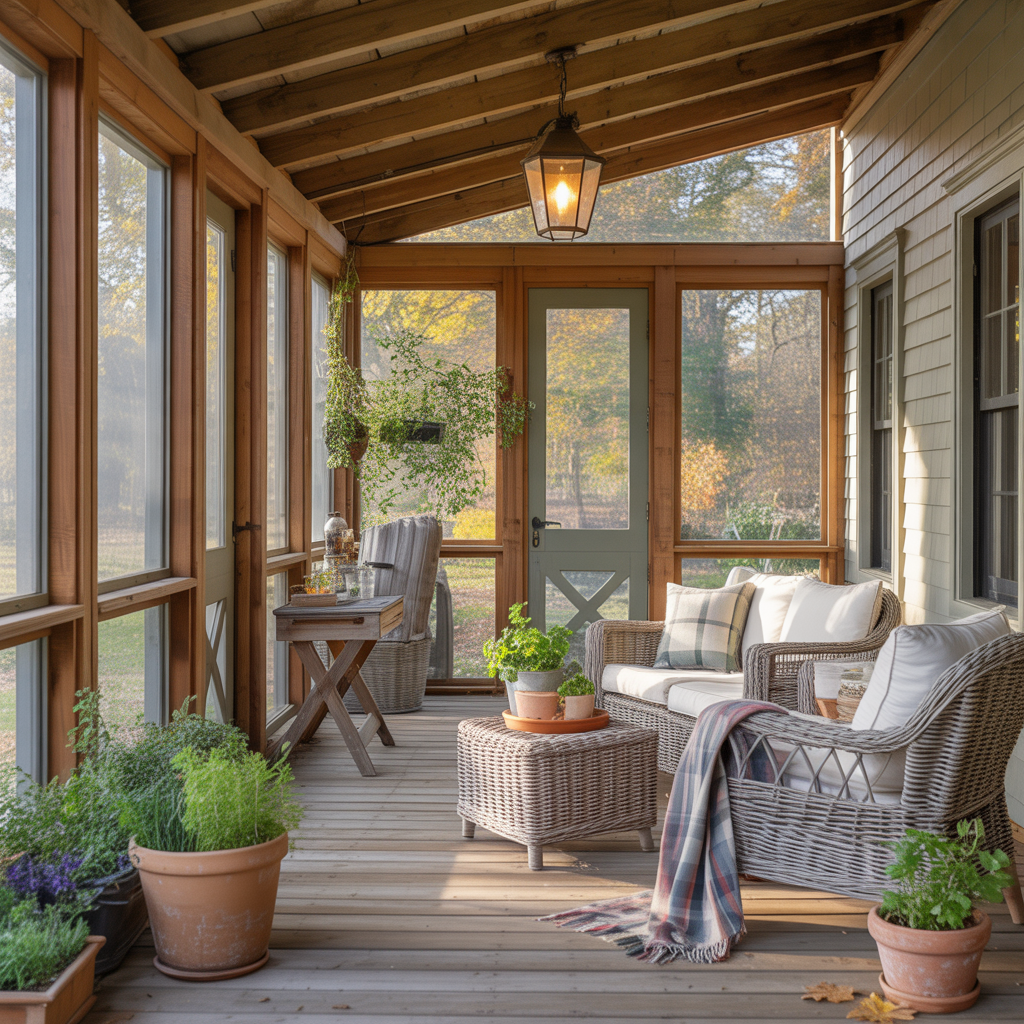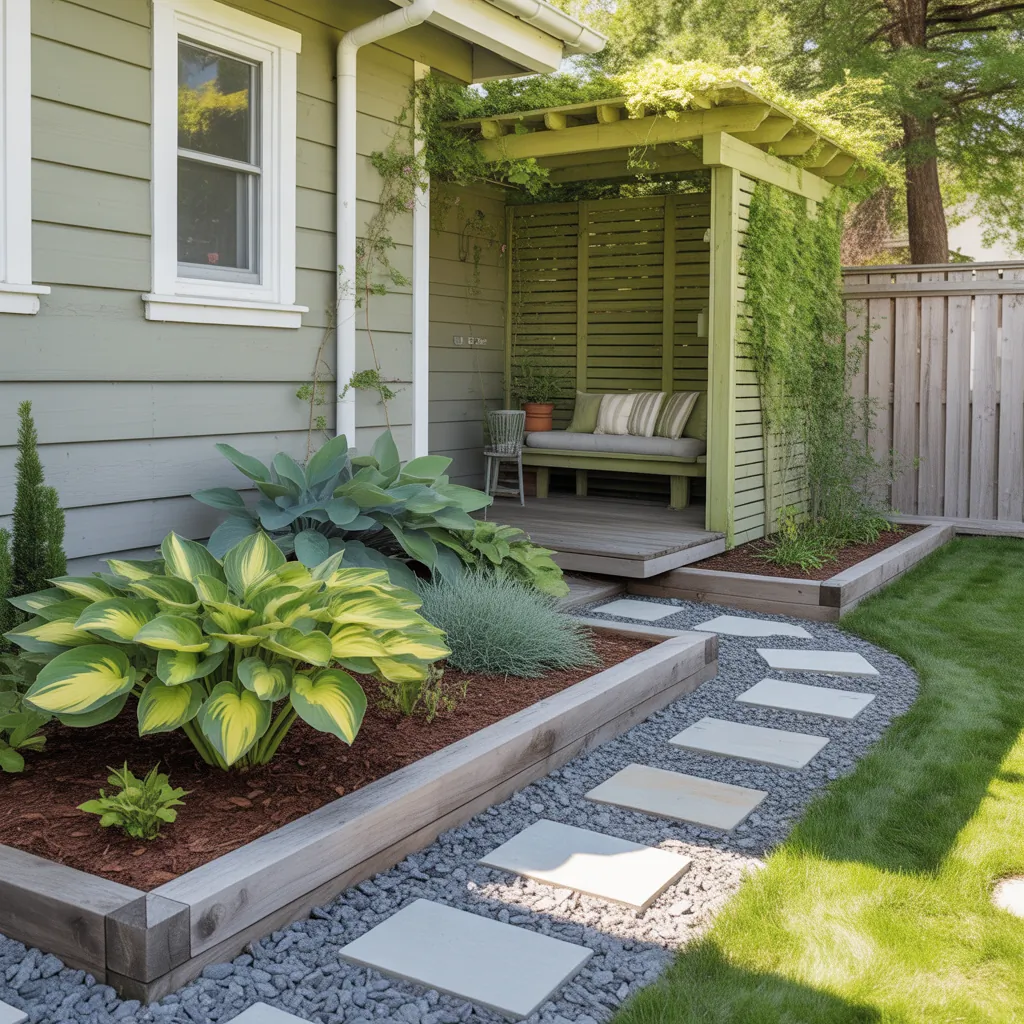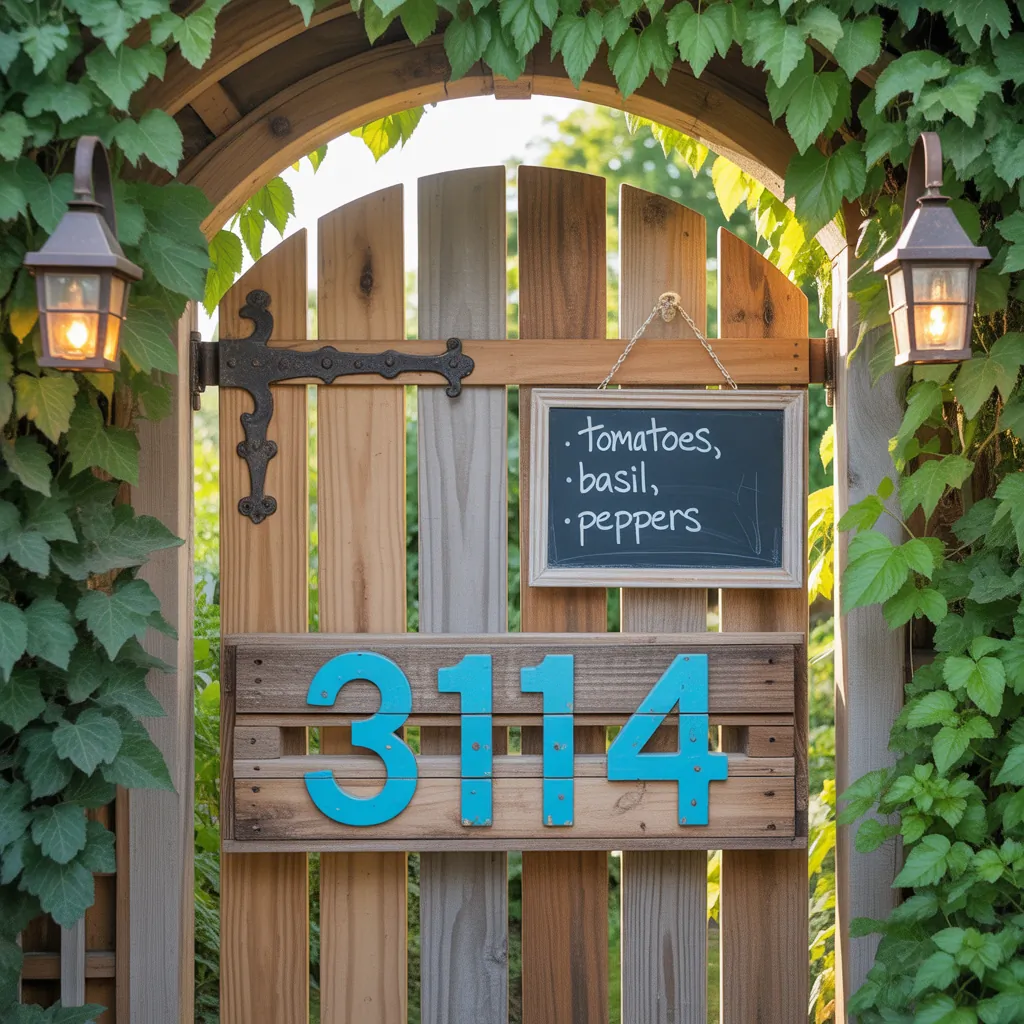Ever stood on your back deck shivering in April or sweating in September and thought, “If only this space could be usable a little longer each year”? You’re not alone. Many homeowners want the comfort of being outdoors without the extremes of weather — and a well-designed three-season porch is the perfect solution. Whether you’re dreaming of morning coffee without chilly winds or a bug-free evening with friends, this 3 season porch idea guide will walk you through practical DIY tips, design inspiration, and step-by-step improvements to make it happen.
Why Choose a Three-Season Porch?
A three-season porch (aka screened porch or enclosed sunroom) extends your living space through spring, summer, and fall. It’s warmer and more weather-resistant than an open deck but doesn’t require the full insulation or permanent HVAC of a four-season room. That balance means lower cost, easier DIY upgrades, and faster permits — perfect for budget-conscious homeowners and weekend DIYers.
Planning Your 3 Season Porch Idea
Assess the existing structure
Start by evaluating the foundation, roofline, and decking. Can your current deck support added walls and windows? Do you need to rebuild the floor or reinforce joists? If you’re unsure about load-bearing issues, consult a structural pro. Electrical work for lighting and outlets should also be considered early.
Decide how enclosed you want it
Three-season porches range from simple screened enclosures to hybrid systems with storm windows or removable glass panels. Consider these options:
- Traditional screens — most affordable and great for ventilation.
- Retractable screens — flexible for open air or full protection.
- Storm windows or sliding glass panels — better weather protection and extended temperature comfort.
Step-by-Step DIY Improvements
1. Permits and prep
Check local building codes. You may need permits for structural changes, added electrical circuits, or new foundations. Create a materials list and timeline before you start.
2. Foundation and framing
Repair or replace deck boards, reinforce joists if necessary, and install a proper sill plate where the new walls will sit. Frame the walls with treated lumber and ensure openings line up for screens or windows.
3. Weatherproofing and roofing
Extend the existing roof or add a new lean-to roof. Use ice-and-water shield in colder climates and proper flashing at transitions. Consider adding insulation in the roof cavity to moderate temperature swings without committing to full heating.
4. Screens, windows, and doors
Install durable fiberglass or aluminum screens with spline tools for a tight fit. If you choose glass panels, use pre-framed sliding windows or storm panels that can go in and out seasonally.
5. Flooring choices
Select low-maintenance, moisture-resistant flooring: composite decking, exterior-grade vinyl plank, glazed porcelain tile, or sealed wood. Add a subfloor or insulating underlayment if you want a warmer feel underfoot.
6. Lighting, fans, and outlets
Install ceiling fans for airflow, layered lighting for ambience (overhead, task, and accent), and GFCI-protected outlets for safety. Electrical work often requires a licensed electrician — factor that into your plan.
Design Inspiration & Decor Tips
Think of your three-season porch as an extension of your interior style:
- Cozy cottage: wicker furniture, layered rugs, and soft throws.
- Modern minimalist: clean lines, neutral palettes, and weatherproof upholstered seating.
- Botanical retreat: hanging plants, potted palms, and rattan accents.
Use durable fabrics rated for outdoor use, add a few indoor plants that tolerate variable temps, and include storage benches to keep cushions and throws dry when not in use.
Budget-Friendly 3 Season Porch Makeover Ideas
- Swap old screens for new mesh — immediate improvement for little cost.
- Paint the porch ceiling a light blue (traditionally called “haint blue”) to brighten the space and deter insects.
- Install solar-powered or plug-in LED string lights for instant ambience without rewiring.
- Use peel-and-stick vinyl plank flooring for a DIY-friendly, inexpensive upgrade.
When to Hire a Pro
DIY is great for many tasks, but hire professionals for:
- Structural work affecting load-bearing elements
- New electrical circuits or major wiring changes
- Complex roofing, flashing, or permanent insulation work
Getting a pro to handle permit-required work can save you time, ensure safety, and protect home resale value.
Real-World Tips from the Field
- Measure twice, cut once — particularly for custom screen frames and doors.
- Choose screens with a higher mesh count if you live near weeds or gnats; upgraded “no-see-um” screens keep tiny pests out.
- Keep ventilation paths clear to prevent moisture buildup; a dehumidifier or ceiling fan helps in humid climates.
- Think seasonally: store cushions in a breathable container, and use furniture covers between seasons.
Frequently Asked Questions
1. How much does it cost to convert a porch into a three-season porch?
Costs vary widely based on size, materials, and how much structural work is required. Expect a basic screened porch conversion to start in the low thousands, while adding glass panels, upgraded flooring, and electrical work can increase costs substantially. Get multiple quotes and build a realistic budget with a contingency.
2. Can I turn my existing deck into a three-season room myself?
Yes—you can often convert a deck into a three-season porch with DIY framing, screens, and a roof extension. However, ensure the deck structure can support walls and a roof; this may require reinforcing joists or footings. Hire a pro for structural assessments if needed.
3. Do I need heating for a three-season porch?
Not usually. Three-season porches are designed for use in milder months without full HVAC. If you want occasional warmth on chilly evenings, consider space heaters, electric baseboard units on a timer, or portable propane heaters, keeping safety and local codes in mind.
Conclusion: Start Your 3 Season Porch Project Today
A thoughtful 3 season porch idea can transform unused outdoor space into a comfortable, functional extension of your home. Start small with screens and lighting, or go bigger with glass panels and new flooring — either way, the result is more time outside, less bug drama, and a higher home enjoyment factor. Ready to get started? Browse our DIY projects for step-by-step guides, check out inspiring home design ideas for style tips, and if you’re improving adjacent spaces, see our kitchen upgrades for complementary renovation inspiration.
Take the first step: sketch your layout this weekend, make a materials list, and decide what you DIY vs. hire out. Your ideal three-season porch is closer than you think.



